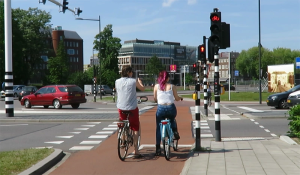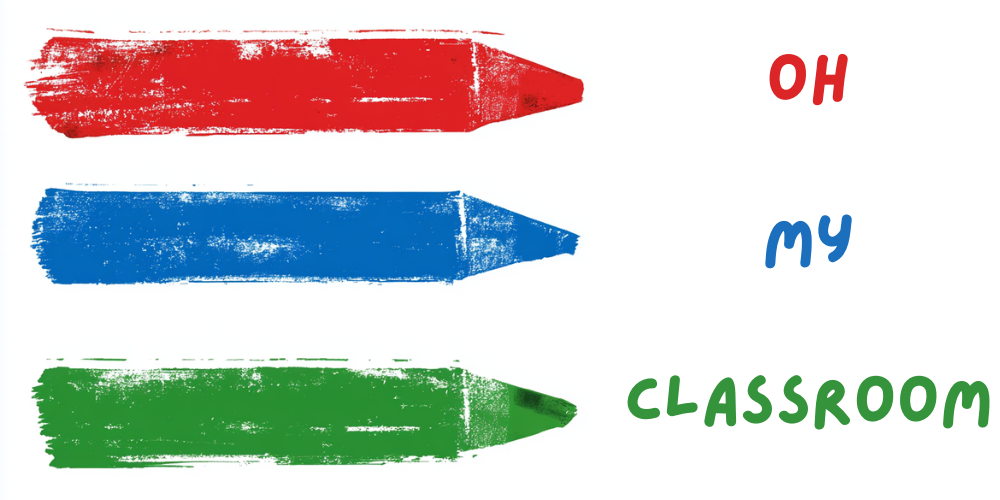If you’re a fan of the thrilling and suspenseful game of Red Light Green Light, where players must freeze when the red light is on and move only when the green light is displayed, you’ll be delighted to know that there are plenty of other exciting games out there that offer similar levels of suspense and enjoyment.
Whether you’re looking for physical challenges, strategic thinking, or cooperative gameplay, games like Red Light Green Light are sure to keep you engaged and entertained.
Get ready to test your reflexes, decision-making skills, and teamwork as you dive into these thrilling alternatives.
“Simon Says”

Simon Says is a classic game that shares similarities with Red Light Green Light in terms of following instructions and quick reflexes. One player assumes the role of “Simon” and gives commands to the other players, such as “Simon says touch your nose” or “Simon says jump three times.” The catch is that players must only perform actions preceded by the phrase “Simon says.” If Simon gives a command without saying “Simon says,” any player who performs the action is out. The game continues until there is only one player left standing. Simon Says is a fantastic option for groups of all ages, promoting listening skills, attention to detail, and the ability to react promptly.
“Statues” –

Statues, also known as Freeze Dance, is a lively game that combines music and movement. Similar to Red Light Green Light, players must freeze when the music stops. One player is designated as the DJ and controls the music. As the music plays, everyone dances and moves around. However, when the DJ abruptly stops the music, all participants must freeze in their current position. Anyone caught moving after the music stops is out. The game continues until only one person remains unfrozen. Statues encourage quick thinking, coordination, and the ability to hold still under pressure.
Related: 20 Exciting PlayDoh Games for Kids
“Traffic Cop” –

Traffic Cop is a fantastic variation of Red Light Green Light that adds an element of strategy and decision-making. One player acts as the Traffic Cop while the rest of the participants are cars. The cars line up on one side of the play area, and the Traffic Cop stands at the other end. The Traffic Cop turns their back to the cars and shouts either “Red light” or “Green light.” When the Traffic Cop calls out “Red light,” all cars must freeze in their tracks. However, when the Traffic Cop shouts “Green light,” the cars can move toward the Traffic Cop. The goal is for the cars to reach the Traffic Cop without getting caught moving during a red light. The Traffic Cop can turn around at any moment to catch moving cars, and any caught cars become Traffic Cops for the next round. Traffic Cop enhances strategic thinking, risk assessment, and the ability to make split-second decisions.
Related: 20 Playful ABC Activities for Toddlers
“Mother, May I?” –
Mother, May I? is an enjoyable game that incorporates a mix of strategy and movement. One player acts as the “Mother” or “Father” and stands at one end of the play area, while the other players line up at the opposite end. The players take turns asking the Mother/Father if they can take a certain number of steps forward. For example, a player might say, “Mother, may I take three giant steps?” The Mother/Father can respond with “Yes, you may” or “No, you may not, but you may take three small steps instead.” The objective is to reach the Mother/Father by following their instructions and getting closer with each turn. However, if a player moves without permission or doesn’t follow the instructions correctly, they must return to the starting line. The first player to reach the Mother/Father wins and becomes the new Mother/Father. Mother, May I? encourages strategic thinking, listening skills, and the ability to follow directions accurately.
Source: icebreakerideas.com
“Crazy Commands” –
Crazy Commands is a variation of Red Light Green Light that adds a fun and unpredictable twist. One player assumes the role of the “Commander” and issues commands to the other participants. However, the commands can be anything except straightforward instructions like “green light” or “red light.” For example, the Commander might say, “Hop like a kangaroo” or “Spin around five times.” The other players must listen carefully and execute the commands as quickly as possible. If anyone fails to perform the command or makes a mistake, they are out. The last player remaining becomes the new Commander. Crazy Commands fosters creativity, quick thinking, and the ability to adapt to unexpected situations.
Source: childhood101.com
“Sneaky Ninja” –
Sneaky Ninja is a stealth-based game where one player takes on the role of the Ninja and the rest become guards. The guards stand in line while the Ninja tries to cross the play area undetected. The guards periodically turn around, and when they do, the Ninja must freeze in their current position. If a guard catches the Ninja moving, the Ninja is out. The objective is for the Ninja to reach a designated point without getting caught. This game enhances patience, stealth, and the ability to stay still under pressure.
Source: store.steampowered.com
“Copycat” –
Copycat is a memory and movement game that challenges players to imitate a series of actions. One player becomes the leader and performs a sequence of movements, such as clapping, spinning, or jumping. The other players must carefully observe and replicate the exact sequence. The leader can try to trick the other players by including fake movements or performing actions with variations in speed. Players who make mistakes are out, and the last remaining player becomes the new leader. Copycat enhances memory, coordination, and attention to detail.
Source: fatherly.com
“Freeze Tag” –
Freeze Tag is a popular variation of the classic game of tag. One player is designated as the “It” and tries to tag the other players. When a player gets tagged, they must freeze in their current position until another unfrozen player touches them to release them. The game continues until all players are frozen or until a time limit is reached. Freeze Tag promotes agility, teamwork, and the ability to think strategically about who to unfreeze.
Source: thinkplaytime.com
“Statue Master” –
Statue Master is a game that combines elements of Simon Says and Red Light Green Light. One player becomes the Statue Master and gives commands to the other players. The commands can include actions like “Strike a pose” or “Act like an animal.” The players must freeze and hold the requested pose until the Statue Master gives a new command. If anyone moves or breaks their pose, they are out. The last player remaining becomes the new Statue Master. Statue Master enhances creativity, body control, and the ability to hold still for extended periods.
Source: en.wikipedia.org
“Stepping Stones” –
Stepping Stones is a game that challenges players to cross an imaginary river using stepping stones. Arrange a series of markers or objects (real or imaginary) in a zigzag pattern on the ground. The players must navigate through the course, stepping only on the markers. However, when a designated player calls out “Red Light,” all players must freeze and not move until “Green Light” is called. If a player moves during a red light, they go back to the starting point. The goal is to reach the end of the course successfully. Stepping Stones enhances balance, decision-making, and the ability to react quickly to changing conditions.
Source: whatdoesmammasay.com
“Silent Ball” –
Silent Ball is a game that tests players’ throwing accuracy and quick reflexes. Participants form a circle and choose one player to start as the thrower. The thrower must silently toss a ball to another player in the circle. However, if the thrower sees any movement from the intended recipient or if they make a noise, they can cancel the throw. The goal is for the thrower to successfully pass the ball without anyone moving or making a sound. If someone is caught moving or making a noise, they become the new thrower. Silent Ball enhances focus, concentration, and the ability to remain still and silent.
Source: playworks.org
“Red Rover” –
Red Rover is a team-based game that combines physicality and strategy. Divide players into two teams and form two lines facing each other, with some distance in between. Each team holds hands to create a chain. One team starts by calling out a player from the opposing team, saying, “Red Rover, Red Rover, send [player’s name] right over.” The called player must then attempt to break through the opposing team’s chain by running and trying to break the linked hands of two players. If the player successfully breaks through, they choose one player from the opposing team to join their team. However, if the player fails to break through, they join the opposing team. The game continues until all players are on one team. Red Rover promotes teamwork, strength, and strategic decision-making.
Source: liveabout.com
“Statue Roulette” –
Statue Roulette is a variation of Red Light Green Light that adds an element of chance. One player becomes the Roulette Master and controls the commands. Instead of just red and green lights, the Roulette Master uses a spinner or a random selection method to determine the commands. For example, the spinner may land on “Jump,” “Spin,” or “Hop on one leg.” Players must perform the commanded action or freeze accordingly. If a player moves or fails to perform the action, they are out. The last remaining player becomes the new Roulette Master. Statue Roulette enhances adaptability, anticipation, and the ability to respond quickly to unpredictable situations.
Source: chegg.com
“Hula Hoop Marathon” –
Hula Hoop Marathon is a game that tests players’ endurance and flexibility. Players stand inside hula hoops, each holding their own hoop. When the game starts, players begin hula hooping while walking or running around a designated area. At random intervals, a “Red Light” command is given, and all players must freeze and hold their hula hoops above their heads. Those who fail to freeze or drop their hula hoops are out. The game continues until only one player remains hula hooping. Hula Hoop Marathon promotes physical fitness, coordination, and the ability to stop abruptly.
Source: verywellfamily.com
“Color Dash” –
Color Dash is a game that combines color recognition and physical movement. Assign different colors to specific areas or objects in a play area. One player acts as the announcer and calls out colors randomly. When a color is called, all players must dash to touch an object or area of that color. However, if the announcer calls out “Freeze,” all players must stop immediately and freeze in place. Anyone caught moving or touching the wrong color is out. The last player remaining becomes the new announcer. Color Dash enhances color recognition, agility, and the ability to react quickly to auditory cues.
Source: 7daysofplay.com
“Balloon Pop” –
Balloon Pop is a fast-paced game that combines movement and coordination. Inflate several balloons and scatter them around a designated area. When the game starts, players must move around the space, trying to pop as many balloons as possible by stomping on them. However, when a designated player calls out “Red Light,” all players must freeze in their tracks. Anyone caught moving during a red light is out. The game continues until all balloons are popped or there is only one player left standing. Balloon Pop promotes agility, quick reflexes, and the ability to stop abruptly.
Source: goodplayguide.com
“Commander’s Challenge” –
Commander’s Challenge is a game that tests players’ ability to follow commands accurately and quickly. One player takes on the role of the Commander and issues a series of commands to the other participants. The commands can include actions like “Jump twice,” “Spin in a circle,” or “Touch your toes.” The players must perform the actions as quickly as possible, but they must freeze if the Commander says, “Red Light.” If anyone fails to freeze or makes a mistake, they are out. The last player remaining becomes the new Commander. Commander’s Challenge enhances listening skills, coordination, and the ability to execute commands promptly.
Source: cncnz.com
“Stealthy Shadows” –
Stealthy Shadows is a game that combines stealth and evasion tactics. Designate one player as the “Light Keeper” and give them a flashlight. The other players become the “Shadows” and must navigate through a dimly lit or dark area. The Shadows must try to reach a specific location without being caught in the Light Keeper’s flashlight beam. If a Shadow is caught in the light, they freeze in their current position until the Light Keeper moves on. The game continues until all Shadows reach their destination or are caught by the Light Keeper. Stealthy Shadows promotes patience, stealthiness, and the ability to remain still and unseen.
Source: onmyoji.fandom.com
“Color Traffic” –
Color Traffic is a game that challenges players’ ability to follow color-coded commands. Assign different colors to various areas or objects in a play area. One player assumes the role of the “Traffic Controller” and calls out colors randomly. When a color is called, players must move and touch an object or area of that color. However, if the Traffic Controller calls out “Stop,” all players must freeze in their tracks. Anyone caught moving or touching the wrong color is out. The game continues until one player remains or a set time limit is reached. Color Traffic enhances color recognition, decision-making, and the ability to react quickly to auditory cues.
Source: eagleplaystructures.com
“Obstacle Course Dash” –
Obstacle Course Dash is a game that combines agility and problem-solving skills. Set up an obstacle course with various physical challenges and obstacles. Players must navigate through the course, following the commands of a designated “Commander.” The Commander can give instructions such as “Crawl under the rope,” “Jump over the hurdles,” or “Balance on the beam.” However, when the Commander says, “Red Light,” all players must freeze in their current position until the Commander gives the green light to continue. Anyone caught moving during a red light must return to the starting point. The goal is to complete the course successfully in the shortest amount of time. Obstacle Course Dash promotes physical fitness, quick thinking, and the ability to adapt to changing conditions.
Source: owntheyard.com
